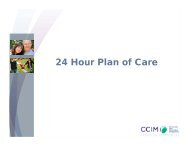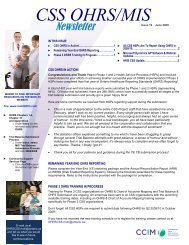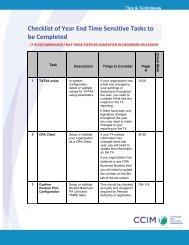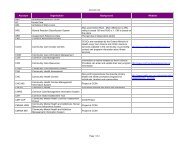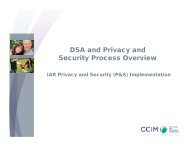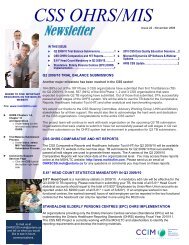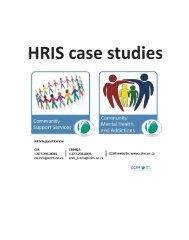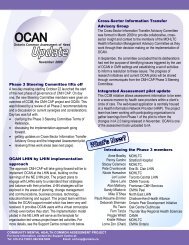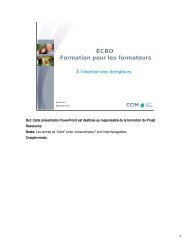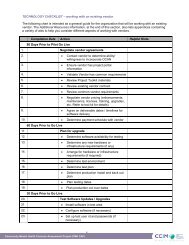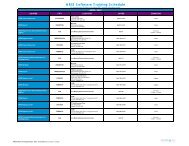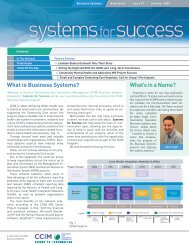RAI-MDS 2.0 Nutritional Care Resource Guide April 2011 - CCIM
RAI-MDS 2.0 Nutritional Care Resource Guide April 2011 - CCIM
RAI-MDS 2.0 Nutritional Care Resource Guide April 2011 - CCIM
- No tags were found...
Create successful ePaper yourself
Turn your PDF publications into a flip-book with our unique Google optimized e-Paper software.
Denominator (on the bottom):• The total number of all residents that could have the specific characteristic / trait of that QI• Example: 18 residents who trigger the use of physical restraints indicator among 100 residents who areassessed during the most recent assessment gives an indicator rate of 18%RISK ADJUSTMENTUnderlying factors that predispose individuals to higher rate of potential quality problems that are beyond the controlof the home, and that may be unevenly distributed among homes (e.g. dementia and aggressive behaviour).Argument to adjust…Comparisons can be made more fairly among homes without penalizing homes with challenging residentsArgument not to adjust..Potential to explain away bad practiceQI INTERPRETATIONIt is helpful to have the <strong>RAI</strong>-<strong>MDS</strong> <strong>2.0</strong> quality indicator definitions available when interpreting the QI results.QI INTERPRETATION: STATISTICAL TERMSMean – AverageMedian - The midpoint in a series of numbers; half the data values are above the median, and half are belowPercentile - A value on the scale of 100 that indicates the percent of a distribution that is equal to or below it25th percentile - 25% of the data are smaller and 75% of the data are larger (e.g. if your home is in the 25thpercentile for prevalence of dehydration, this means that 75% of all the homes have equal or more dehydration thanyour home)75th percentile - 75% of the data are smaller and 25% of the data are larger (e.g. if your home is in the 75thpercentile for prevalence of weight loss, this means that 75% of all the homes have equal or fewer residents withweight loss than your home)SEE END OF THIS CHAPTER FOR <strong>RAI</strong>-<strong>MDS</strong> <strong>2.0</strong> NEW GENERATION QUALITY INDICATOR DEFINITIONSCompliance Key <strong>RAI</strong>-<strong>MDS</strong> <strong>2.0</strong> Risk Indicators1. Prevalence of new pressure ulcers2. Prevalence of worsening pressure ulcers3. Prevalence of daily physical restraint4. Prevalence of weight loss5. Prevalence of indwelling catheters6. Prevalence of bladder or bowel incontinence - low risk7. Incidence of worsening bowel and bladder continence - high and low8. Prevalence of moderate to severe pain9. Incidence of worsening pain10. Prevalence of falls11. Prevalence of pneumonia12. Prevalence of urinary tract infections13. Prevalence of wound infection14. Incidence of new fracturesFor Information: 416.327.7625 5ltchrai@ontario.ca5



